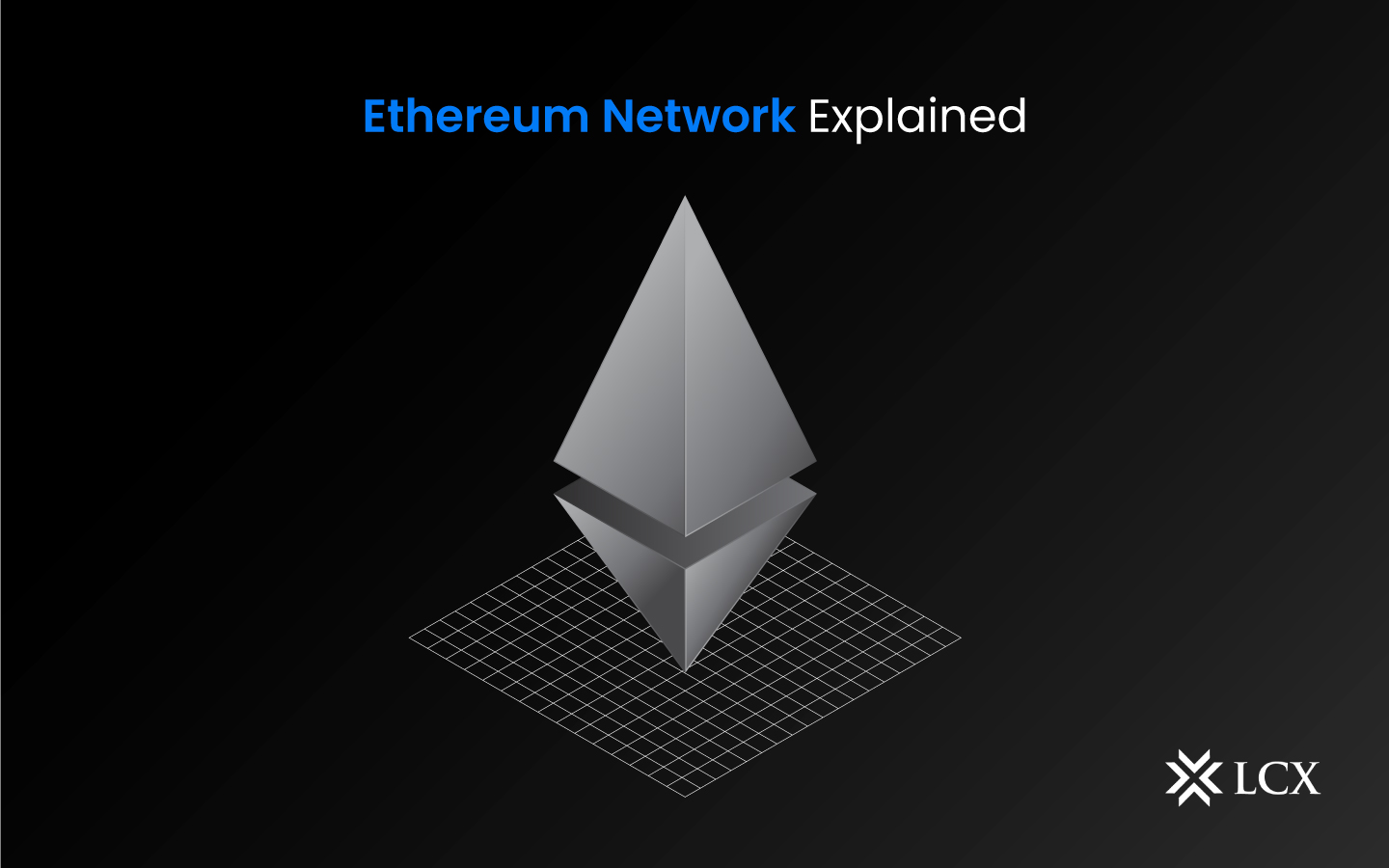Blockchain technology has disrupted numerous industries, and at the forefront of this revolution stands the Ethereum network. Launched in 2015 by the visionary Vitalik Buterin, Ethereum has emerged as a groundbreaking platform for decentralized applications and smart contracts. Its innovative approach to blockchain technology has transformed how businesses operate and opened up new avenues for financial inclusion and collaboration. In this article, we will delve into the workings of the Ethereum network, its unique features, and its potential impact on the future of business and finance.
What Is Ethereum?
Ethereum is fundamentally a global, decentralized software platform enabled by blockchain technology. It revolutionized the existing blockchain landscape by introducing an embedded Turing-complete programming language, enabling the creation of diverse decentralized applications, commonly referred to as Dapps. This cutting-edge platform operates on its own digital currency known as “ether.”
Ethereum is designed to be programmable, secure, decentralized, and scalable. It is the blockchain of choice for developers and businesses creating technology based on it to revolutionize the operations of numerous industries and human lives. It inherently supports smart contracts, which can be envisioned as secure cryptographic vaults that hold specific values and are an indispensable component of decentralized applications. Several decentralized financial (DeFi) and non-financial applications utilize smart contracts and blockchain technology.
As Ethereum extends its applicability to various sectors beyond finance, it has earned the moniker “Blockchain 2.0” for its ability to demonstrate the immense potential of blockchain technology in diverse domains. To achieve consensus among participants, Ethereum utilizes a mechanism called Proof of Stake (PoS), which contrasts with Bitcoin’s Proof of Work (PoW). PoS operates based on the stake held by each participating node, making it a more energy-efficient alternative to PoW.
History of Ethereum
Vitalik Buterin co-created Ethereum to address Bitcoin’s deficiencies. Buterin published the Ethereum white paper in 2013, describing smart contracts — automated, immutable “if-then” statements — that facilitate the creation of decentralized applications. Despite the existence of DApp development in the blockchain space, platforms were not interoperable. Buterin envisioned Ethereum uniting them. According to him, standardizing how DApps operate and interact was the only way to sustain adoption. So, Ethereum 1.0 was created.
Vitalik Buterin co-created Ethereum to address Bitcoin’s deficiencies. Buterin published the Ethereum white paper in 2013, describing smart contracts — automated, immutable “if-then” statements — that facilitate the creation of decentralized applications. Despite the existence of DApp development in the blockchain space, platforms were not interoperable. Buterin envisioned Ethereum uniting them. According to him, standardizing how DApps operate and interact was the only way to sustain adoption. So Ethereum 1.0 was created.
Over time, developers brought their own decentralized concepts to Ethereum. These users established the DAO in 2016, a democratic organization that voted on network adjustments and proposals. The organization was supported by a smart contract and did not require a CEO to wield authority over Ethereum. Instead, a majority vote was required for modifications to be implemented. DAO voted to “hard fork” Ethereum to tackle security vulnerabilities by effectively undergoing a significant software update. This new variant kept the name Ethereum, whereas the original network is known as Ethereum Classic.
The Evolution of the Ethereum Blockchain
Since its launch in July 2015, the Ethereum blockchain network has endured a number of upgrades and modifications. Among the most important:
Frontier (2015): This was the first release of the Ethereum network, which permitted users to construct and deploy their own smart contracts and decentralized applications.
Homestead (2016): This introduced a number of enhancements, including security enhancements, gas optimizations, and network stability enhancements.
Metropolis (2017-2019): This was a two-part upgrade comprised of Byzantium and Constantinople for Metropolis (2017-2019). Byzantium implemented significant enhancements, including a new mining algorithm, enhanced privacy features, and a decrease in block rewards. Constantinople included upgrades to decrease transaction fees, improve efficiency, and introduce new features such as off-chain transactions.
Istanbul (2019): This included the integration of zk-SNARKs (a type of zero-knowledge cryptography), a new mining algorithm, and numerous protocol upgrades to improve network efficiency and security.
Beacon Chain (2020): In November 2020, the required 16,384 deposits of 32 staked ETH were successfully made to assure Beacon Chain’s secure operation. As a consequence, the Beacon Chain began producing blocks on December 1, 2020, marking a significant step towards the realization of the Ethereum vision.
Berlin (2021): This protocol upgrade in Berlin, 2021, introduced several new features, including gas charge optimizations, enhanced security measures, and a reduction in transaction fees for certain types of transactions.
London (2021): This introduced EIP-1559, which altered the method by which Ethereum network transaction fees are calculated. This upgrade introduced a fee burn mechanism, which helps reduce the total supply of ETH and introduces a more predictable fee structure for consumers.
Paris (The Merge — 2022): The Paris upgrade was activated when the proof-of-work blockchain reached a terminal total difficulty of 58750000000000000000000 on September 15, 2022, at block 15,537393. The transition from proof-of-work to proof-of-stake was a significant milestone for Ethereum, which was triggered on the following block. Along with this change, the upgrade included enhancements to the execution clients, similar to Bellatrix on the consensus layer, allowing the execution clients to receive instructions from their connected consensus clients by activating a new set of internal API methods known as the Engine API.
These upgrades have introduced numerous enhancements to the Ethereum network in terms of security, efficiency, and scalability, and have increased the network’s functionality.
Shapella or Shanghai (2023): Since switching to a proof-of-stake system, Ethereum has just undergone its first significant upgrade, or “hard fork.” The Shanghai upgrade permits validators to extricate staked ether (ETH) from the network. While the primary objective of the upgrade is to implement Ethereum Improvement Proposal-4895, which enables validator withdrawals, other significant upgrades will impact Ethereum app developers and a significant portion of the chain’s users.
The enhancement will alter the functioning of the blockchain. A reduction in petrol fees for layer-2 solutions like Polygon is one of the most significant modifications. This update seeks to improve the blockchain’s overall functionality and reduce transaction fees. The ability for users to access and unstake their Ethereum tokens, which were previously sealed in a smart contract when they became validators on the proof-of-stake-based Ethereum blockchain known as Beacon Chain, is another significant change. This update gives users more options for administering their staked ETH tokens.
The Shanghai update introduces technical enhancements to the smart contract feature, which will help to position Ethereum as a significant player and reflect Ethereum’s ongoing efforts to improve its technology and increase user value.
Features of Ethereum
- Smart contracts: One of the key innovations introduced by Ethereum is the concept of smart contracts. These self-executing contracts are coded agreements that automatically enforce the terms and conditions defined within them. Built on Ethereum’s blockchain, smart contracts eliminate the need for intermediaries, reducing costs and increasing efficiency. They can be utilized across various industries, including finance, supply chain management, and real estate, to automate processes and enable trustless transactions. The primary characteristic of a smart contract is that it cannot be modified once it has been executed, and any transaction performed on top of a smart contract is recorded perpetually; it is immutable. Therefore, even if the smart contract is modified in the future, the transactions associated with the original contract cannot be modified.
- Ethereum virtual machine (EVM): The Ethereum Virtual Machine (EVM) is a crucial component of the Ethereum network. It is a runtime environment that executes smart contracts, allowing developers to build and deploy decentralized applications (dApps) on top of the Ethereum blockchain. The EVM’s Turing-complete programming language, Solidity, provides developers with a powerful toolset to create complex and innovative applications. This has led to a thriving ecosystem of dApps, ranging from decentralized finance (DeFi) protocols to non-fungible token (NFT) marketplaces.
- Ether: Ether (ETH) serves as the native cryptocurrency of the Ethereum network. It plays a vital role in facilitating transactions and incentivizing the network’s participants. Unlike Bitcoin, which primarily serves as a digital store of value, Ether has dual functionality. It can be used both as a digital currency and as “gas” to power computations and execute smart contracts on the Ethereum network. This duality enhances the flexibility and utility of Ether within the ecosystem.
- Decentralized applications (dApps): A Dapp program operates on a decentralized peer-to-peer network. It is software designed to operate in the Ethereum network without a centralized system, and that is the primary distinction: it enables direct interaction between end-users and decentralized application providers. When an application is open-source (its code is on Github) and employs a public blockchain-based token to run, it is considered a Dapp. A token serves as the propellant for a decentralized application. Dapp permits the decentralization of back-end code and data, and this is the primary architecture of any Dapp.
- Decentralized autonomous organizations (DAOs): A DAO is a decentralized and democratic digital organization that operates without hierarchical management. Essentially, a DAO is an organization in which decision-making is delegated to certain designated authorities or a group of designated individuals as part of an authority, as opposed to a centralized authority. DAOs rely on smart contracts for decision-making, or decentralized voting systems, within the organization, as they exist on a blockchain network that is governed by the embedded protocols of a smart contract. Before any organizational decisions can be made, the voting system, which is a decentralized application, must be utilized.
Conclusion
In conclusion, the Ethereum network stands as a groundbreaking platform that has revolutionized the world of blockchain technology. With its smart contract functionality and decentralized nature, Ethereum has empowered developers and entrepreneurs to create innovative applications and ushered in a new era of decentralized finance (DeFi), non-fungible tokens (NFTs), and decentralized applications (DApps).
Moreover, Ethereum’s scalability solutions, such as Ethereum 2.0 with the introduction of the Beacon Chain and shard chains, are poised to address the network’s scalability limitations, ensuring that it can handle a larger number of transactions while maintaining security and decentralization. Looking toward the future, the Ethereum network shows great promise and potential for further growth and development. Ethereum 2.0’s full implementation is anticipated to bring significant improvements in terms of scalability, energy efficiency, and transaction throughput, which will open doors to even more widespread adoption.










